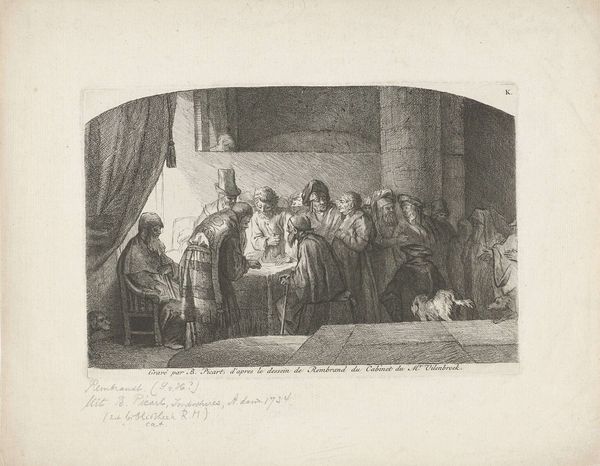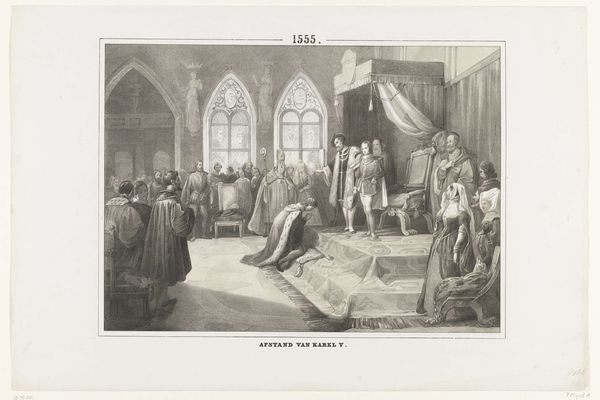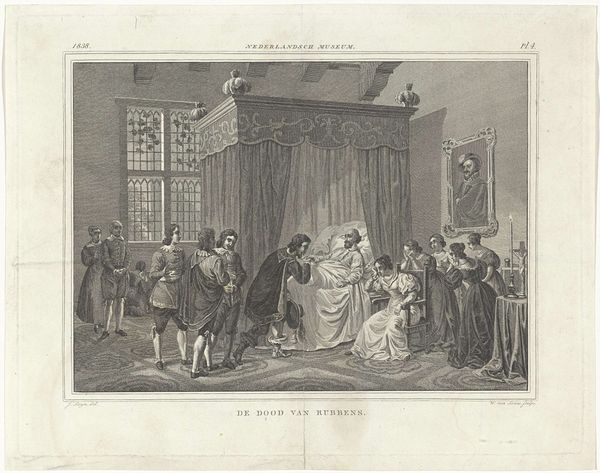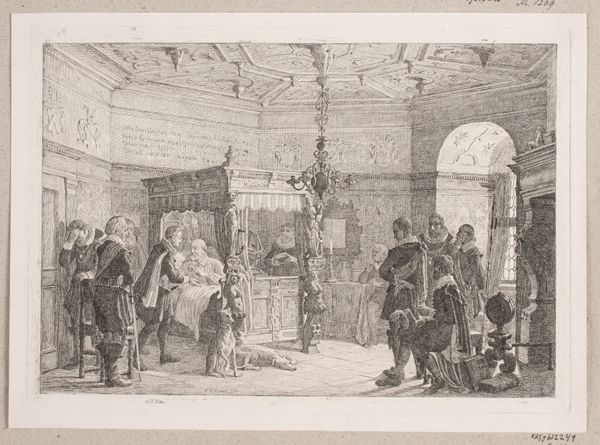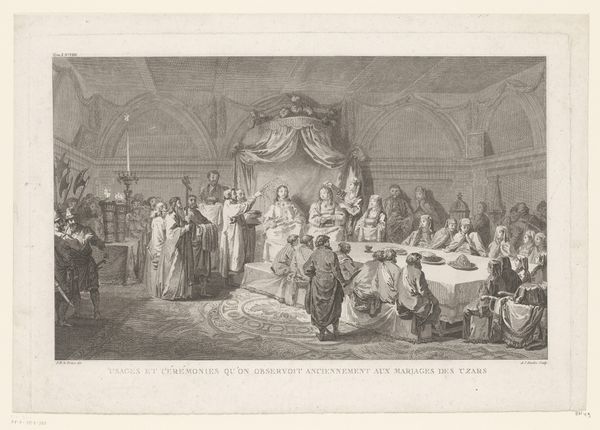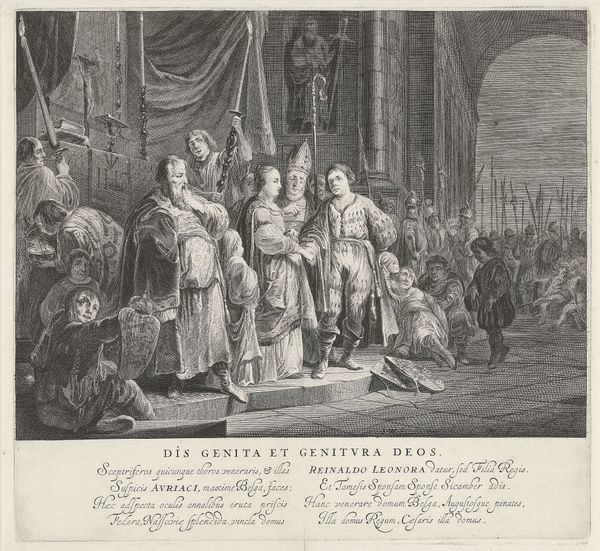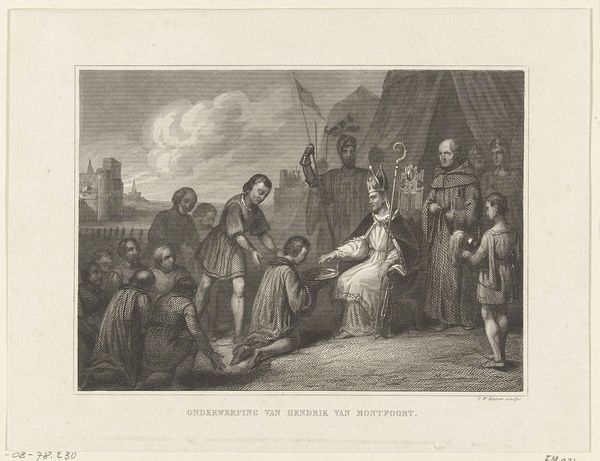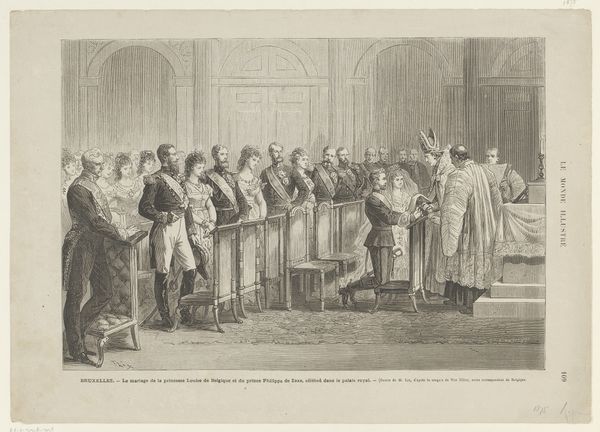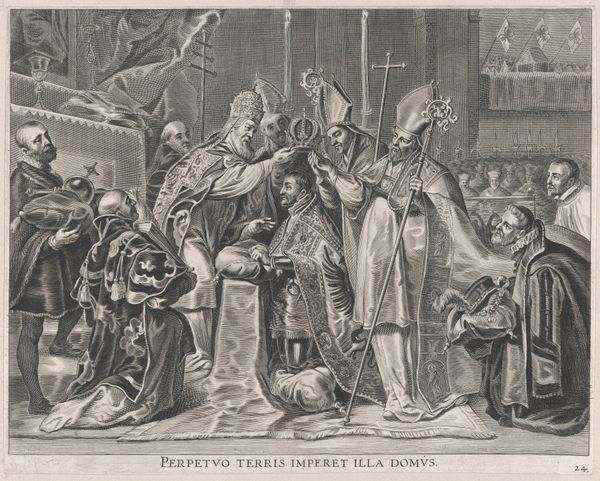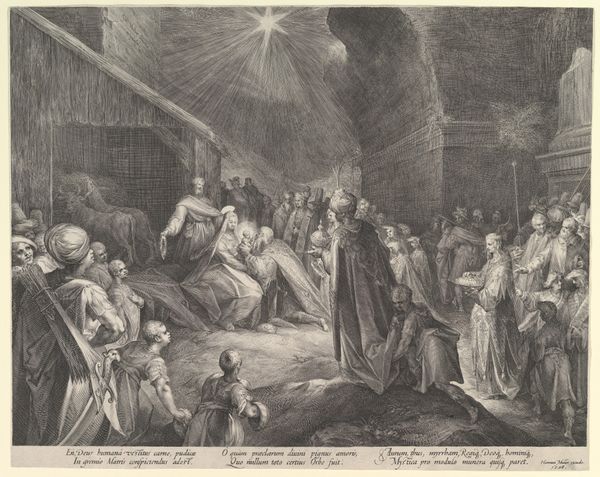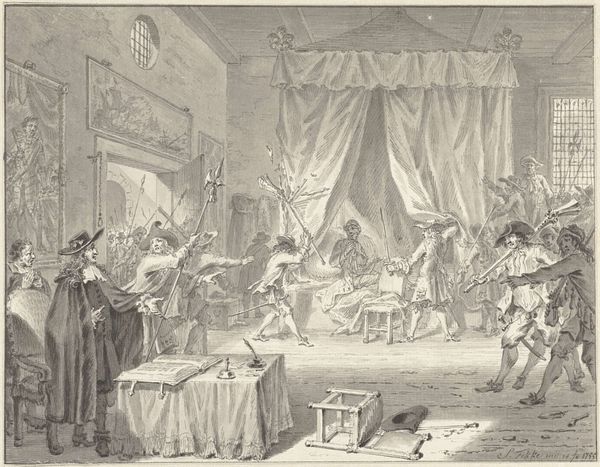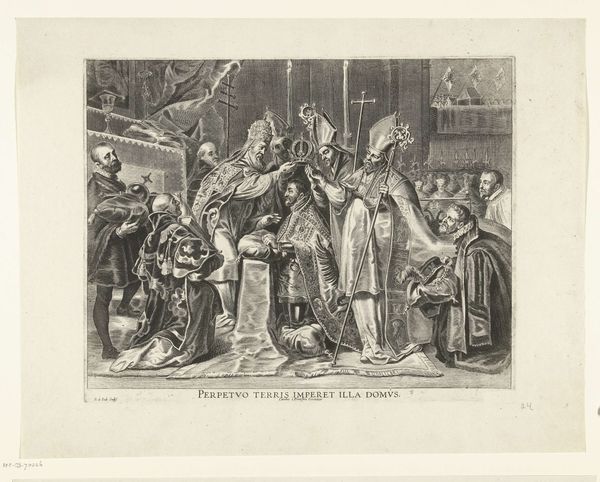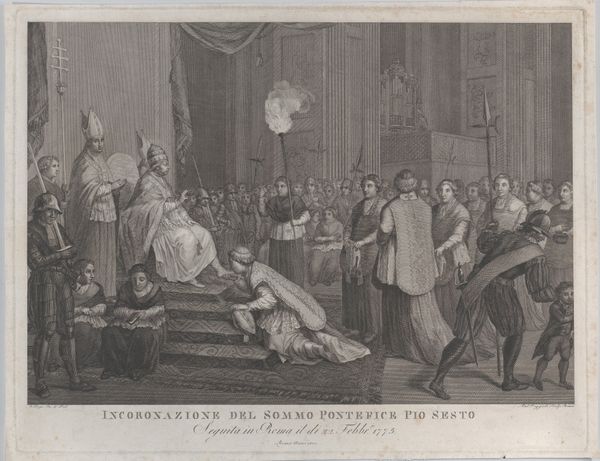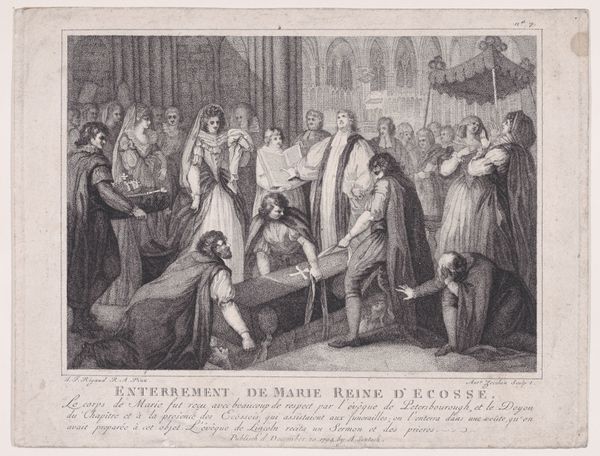
drawing, engraving
#
portrait
#
drawing
#
narrative-art
#
pen illustration
#
death
#
caricature
#
figuration
#
romanticism
#
genre-painting
#
history-painting
#
engraving
Copyright: Public domain
Curator: Here we have "The Death of Bohdan Khmelnytsky", a drawing crafted around 1837 by Taras Shevchenko. Its meticulous engraving captures a pivotal, tragic moment. What’s your first impression? Editor: The mood strikes me immediately – heavy, ceremonial, and profoundly mournful. There's an incredible stillness despite the number of figures present. Is it pen? I wonder, who exactly is gathered and what narrative are we diving into? Curator: Indeed, this piece employs engraving, enhancing its somber tones. This portrays the death of Khmelnytsky, a crucial figure in Ukrainian history who led a major Cossack rebellion. The surrounding figures would represent clergy, military leaders, and perhaps family members, all impacted by this seismic loss. Shevchenko's own connection to Ukrainian national identity makes this rendering particularly charged. Editor: Right, Shevchenko, a national poet and a central figure in advocating Ukrainian cultural and political independence. Given that context, this death scene then transcends personal tragedy. It's about power vacuums and national anxieties, specifically anxieties during periods of foreign dominion. I mean, just look at the cluster of icons present... It’s performative mourning meant for public consumption. Curator: Precisely, the deliberate presentation becomes very clear. As a piece made decades after the actual event, Shevchenko invites audiences to consider the symbolic weight of Khmelnytsky's death. It emphasizes ideas around cultural autonomy during a period marked by shifting imperial controls and intensifying socio-political struggle. He likely envisioned its reproduction on a grander scale for wide distribution. Editor: And you’re right; we cannot look past these historical undertones given the political circumstances that spurred the revolution against imperial Russia. Also, there’s this air of hagiography - figures are poised like disciples. The focus is not just on his physical death but the death of the hope for national liberation. It becomes clear he represents much more than one man. Curator: He embodies a period and a potent call to identity. This pen illustration by Shevchenko functions less like an observed moment but rather as a staged narrative laden with emotional cues. And it really sheds light on both Shevchenko's own role in the Ukrainian national movement. Editor: Right. Art becomes such an effective tool for communicating nationalist values because emotions run high. To see such a delicate medium hold such powerful symbolism leaves me breathless. This illustration asks us to consider not only an historic death but an enduring national hope. Curator: Yes, the emotional intensity crafted by Shevchenko and conveyed so effectively through the detailed medium grants it such potency. I believe our conversation makes it possible for a contemporary audience to access historical underpinnings, appreciate this artwork on multiple levels, and comprehend it through shifting contexts.
Comments
No comments
Be the first to comment and join the conversation on the ultimate creative platform.
